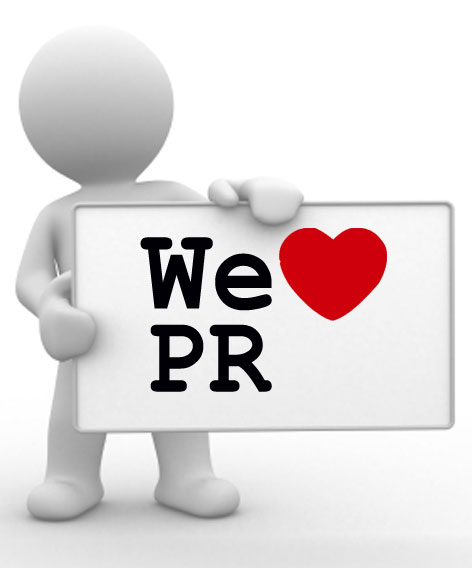How to Create a Brand Identity For Your Small Businesses

This is the first out of our three-part series to be published about public relations.
There is a misconception that creating a brand identity should only be done by large companies that actively need to maintain an image. This is why most marketing efforts of small businesses are diverted to advertising and below-the-line marketing. Your business image, no matter the size of your business, is equally important as raising your revenue every quarter.
This is because one of the keys to a successful business is a well-founded brand identity. Without it, you’re just another business among thousands in the market.
Is creating a brand identity difficult?
An identity is not something you can have overnight or dictate to your market. It involves a process and it takes time, which you will have to create through research and planning; build by executing plans effectively and re-enforcing your campaigns; and manage through careful evaluation of data gathered from campaign executions and control of information flow. Public relations communication is a marketing tool that allows you to create, build, and manage your brand identity.
Assuming that you’re launching a new product or service in the market, here is a guide on creating your brand identity.
Identify your Unique Selling Proposition (USP)
 Every product or service has something unique to offer. If you feel as if yours doesn’t have one, then create one.
Every product or service has something unique to offer. If you feel as if yours doesn’t have one, then create one.
It has to be something that is identifiable only to your business. It can be be anything as long as only you provide it – a characteristic, additional formula, smell or taste, additional purpose, economic pricing, affiliation, or attribution to name a few.
Take Dominic Deville for example. His job is to work as a clown that parents hire for their children’s birthday. However, instead of doing magic tricks and making balloon hats, Dominic stalks, scares, and threats children of smashing a pie on their faces as a birthday present.
In short, separate yourself from the competition and give your business an edge to work with by finding a unique and positive quality or attribute in your product or service.
Know your target audience
Defining your audience in any kind of communication is important for three reasons:
1. Your audience is basically your customers/clients – they keep your business alive.
2. How you want your product/service to be known will depend entirely to what appeals to them.
3. Understanding their behavior will make it easier for you to control information flow. This includes what they want to know and what they don’t need to know.
Defining your target audience involves understanding your demographics and psychographic. Demographics are the most recent statistical characteristics of your audience (gender, age bracket, income bracket). Psychographic are common behavioral characteristics of your audience such as (habit, lifestyle, fashion).
Let’s say you sell canned tuna with omega-3 and your USP is “The can of tuna that help you build muscles and maintain a healthy heart.” You defined your target audience as males and females within 18-40 years of age who live an active lifestyle and strive to become physically fit.
Knowing your target audience, you should organize events that promote a balanced diet and nutrition and regular exercise. To promote the product you are selling, you can tie up with a mainstream gym to arrange a mass demonstration of aerobics, a symposium on nutrition and dietetics, a family fun run, or any event that caters to what appeals to the psychographic of your target audience.
Make a SWOT analysis
SWOT stands for strengths, weaknesses, opportunities, and threats.
Strengths must explain why your product sells and the reasons consumers buy your brand.
Weaknesses are anything that your product or service may be lacking. This can be poor packaging, unavailability to some areas, and others.
Opportunities are anything that you think your product can capitalize on to improve your business moving forward.
Threats are anything that may render your brand to a disadvantage.
Strengths and weaknesses are internal factors while opportunities and threats are external factors that may make or break your brand.
Here is a simple example of a SWOT for a fictitious starting diner named Average Joe’s Kitchen with its tagline, “Where the serving is not so average.” Every product is served double the size of the ordinary.
Strengths
- Our products are almost double in terms of serving size
- The price is competitively cheaper than buying two servings of the competition
Weaknesses
- Brand is not established yet
- The store’s ambiance may not be appropriate for its USP and name
Opportunities
- The decline in the economic condition makes people buy food in bigger serving that costs less instead of buying two servings
- People are looking for a fresh and new alternative in terms of commercial food products
Threats
- Accessibility of competing brand
- Emergence of competitors that offer the same value
Develop an annual PR plan
Making a PR plan is basically thinking of communication opportunities such as events and/or promotions you can participate, take advantage of, or even host yourself. Given that you have defined your USP and target audience, you can now plan your events and promotions based on the SWOT you created.
Let’s continue using Average Joe’s Kitchen as an example. After determining your USP (which is having a big serving of everything), defining your target audience, and making a SWOT, you can create an Annual PR Plan by positioning your brand as the choice for big-eaters with a small budget. This will create your first impression to your market and you will be known according to how you introduce yourself as a brand.
Campaign title: The Average Project
Key Communication Message: Eat big and spend less! Average Joe’s Kitchen serves not-so-average meals at average prices so every average American can eat more and save more.
1st Quarter Strategies and Tactics Strategy: Gather free local press and exposure.
Tactic: “Two Become One” a Valentine’s Day event where a program is prepared for couples who registered. Packages of meals are prepared for registrants to choose from and each package is priced at a rate of almost just paying for one person. Tie up with the local association or government and other possible commercial bodies in organizing this event – this way you get to subsidize your spending and you also make your event of local press importance.
After making the arrangements, you can now make a design for poster printing and flyer printing to market your up and coming event. An annual PR plan is usually comprised of minor and major projects. The idea is to hold at least one major project semi-annually. Just be careful in choosing which event or occasion of the year you plan to execute a major project.
Should you have questions, suggestions, additional information, or you simply want to share an insight or experience regarding the topic feel free to do so by writing a comment below.




